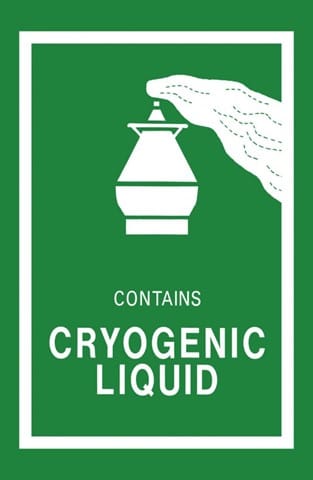Dry shippers under cryogenic temperature range

From cell & genes, embryos, tissue samples and immunotherapy-based medicines. Dry shippers & cryogenic storage are essential to maintain the right temperature and ensure product integrity.
What are Dry Shippers?
Dry shippers, also known as cryogenic shipping, LN2 shippers or liquid cylinder transport, are the coldest shipping solution available and maintains a temperature between -150°C and -196°C. Unlike dry ice shipments that only last for a couple of days, dry shippers can be maintained for up to 10 days. Which offers a comprehensive solution for hospitals, laboratories, research institutions and donation centres.

How do dry shippers work?
Dry shippers are sustained by insulated containers / shipping dewars which consist of vacuum vessels with multilayer insulation in the annular space. These units are designed to transport biological specimen safely at liquid nitrogen (LN2) temperatures without the risk of spilling liquid nitrogen (LN2). Below you can find the procedural steps to fill dry shippers before transportation.
- Wear insulated goggles and a face shield to protect the eyes from any chemical splashes, as well as irritating mists, vapours and harmful fumes.
- Add the liquid nitrogen (LN2) to the dry shipper slowly. When the liquid reaches the neck of the dry shipper, stop filling. Replace the cap and set the dry shipper aside for a period of time to allow the liquid to saturate the absorbent.
- Repeat Step 2 until the liquid level no longer drops on standing.
- Let the dry shipper cool down for at least 24 hours once the liquid level no longer drops.
From Step 1 to Step 4, Royale International’s Life Sciences Division will take care of the dry shipper procedures, ensuring the absorbent holds the liquid nitrogen (LN2) for your shipment.
How do we transport your cryogenic shipment?
- Wear insulated goggles and a face shield to protect the eyes from any chemical splashes, as well as irritating mists, vapours and harmful fumes.
- Remove all liquid nitrogen (LN2) from the dry shipper on the shipping day.
(Note: Empty the dry shipper content into a designated container or a large dewar flask instead of pouring them down the sink as it could crack the surface of any object. Make sure all liquids have been removed.) - Stand the dry shipper upside down until the liquid stops flowing.
- Repeat Steps 2 and 3 until you have removed the liquid.
- Place specimens into the dry shipper and replace the cap.
- Place the dry shipper inside the protective case.
- Complete the “Dry Shipper” checklist, place the hazardous label on the package and follow all the GDP regulations to transport the shipment.
What services does Royale provide for cryogenic shipments?
Documentation for your Cryogenic Shipment
Cryogenic shipments require a lot of documentation. You should prepare everything from Airway Bills to Export Licenses, Letters of Assurance, and Material Safety Data Sheets to pass through the customs clearance process.
Shipping requirements and documentation may vary between countries and carriers. Please contact our Life Sciences expert for more detailed information.
Labelling for your Package
In most cases, you need to attach a Cryogenic Liquid Label for cryogenic shipments. To smoothen the logistics & customs clearance process, Royale will attach the Cryogenic Liquid Label to the packaging and list out all key information such as the shipping name, and the shipper’s and consignee’s names & addresses.

Below, you can see an example of how you should list the information on the package:
- The Proper Shipping Name:
Dry Shipper/ LN2 Shipping - Shipper’s Information
Name: David Roberts
Address: Princess Margaret Hospital, Singapore - Consignee’s Information
Name: Anna Hawes
Address: Queen’s Medical Center, New York, United States
Provide Protective Cases for Cryogenic Shipments
When shipping Life Sciences products under cryogenic temperatures, Royale adds a high-quality, strong protective case to maintain a fixed position for your shipment without damage. IIf you tilt the container sideways or upside down, it can affect the biological specimens. We use packaging that maintains your content in optimal condition.
Contact us today!
When it comes to cryogenic shipping, the handling & transport procedures are of critical importance. To overcome challenges for your business, Royale International has developed a Life Sciences Division that specialises in the worldwide handling and transportation of cryogenic shipments, ensuring your product is safely delivered to its destination. Ranging from customs clearance to import / export permits and product verification reports, all documents that we process fulfil the requirements of the Customs Authority, International Air Transport Association (IATA), and Good Distribution Practice (GDP).
Before shipping cryogenic products, you can also have a look at this guide to understand the four main factors to consider for your Life Sciences shipment!
Click here to learn more about our Life Sciences services!
Click here to learn how we overcome the risks & challenges of temperature-controlled products!


